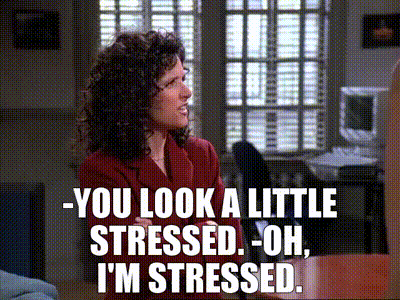When Kramer can’t sleep due to the giant red sun in the shape of a chicken from a nearby restaurant, he and Jerry switch apartments. After his first night on the Red Planet, Jerry is spooked by a creepy doll named Mr. Marbles. Although Kramer claims Mr. Marbles is harmless, did he have an obligation to inform Jerry of Mr. Marbles before the two switched apartments?
New York Courts generally follow the rule of caveat emptor – “buyer beware.” Under this principle, the responsibility is on the buyer to inspect a home (or any other asset for purchase) for dangers or imperfections before signing a contract for purchase. With only some limited exception, which may be helpful to Jerry, the buyer must be the one to conduct any inspections to make sure that the property is up to satisfactory conditions. For example, if Jerry wanted to make sure he could get some sleep then he’d have to look for a red menace that could be burning his brains.
But there are exceptions to this rule, and some important factors to consider.
First of all is the simple problem of searching for something that is going to come to life in the middle of the night to eat Jerry. This unique problem goes to the heart of applying caveat emptor to a situation involving a possible haunted premises. While it is common knowledge among homebuyers to inspect for potential damage to a foundation or the possibility of other risks to a home, the threat of a poltergeist on a chicken supernova is one that someone like Jerry may not think about when moving apartments. It is likely that searching for ghouls and goblins is outside the reasonable scope of the risks assumed under caveat emptor.
While the responsibility is normally on the buyer, the New York Courts do allow for some flexibility of the doctrine of caveat emptor and require that the seller disclose certain kinds of information that are outside the normal risk assumption during a real estate transaction. The burden on the homebuyer is only that he acts prudently in evaluating the property before sale, not that he inspects for any possible danger. The risk of goblins, ghouls, and ghosts, is one outside what even the most thorough of all homebuyers would inspect for and, as such, a New York Court is unlikely to find the doctrine of caveat emptor in this situation. So if caveat emptor does not apply, does Jerry have a case?
A second point to consider is whether Kramer’s apartment is, in fact, haunted. We hear Mr. Marbles moving while Jerry is asleep in Kramer’s apartment and we see Mr. Marbles moving at the end of the episode when Jerry is back in his own apartment. Are these mere figments of Jerry’s wild imagination due to him being stressed from all the red?
It may not matter, at least one New York Court has found that, legally speaking, a property was haunted based upon news reports with interviews from a homeowner describing the haunting. While Kramer does not actively promote the existence of Mr. Marbles, say like on his semi-autobiographical Peterman Reality Tour, Kramer does say that Mr. Marbles is “harmless.” Does this mean that Kramer thinks Mr. Marbles is just a harmless, but realistic-looking, doll, or does Kramer know the truth; that Mr. Marbles is alive, but harmless. If Kramer knows Mr. Marbles is alive, then this may show that his apartment is haunted and outside the scope of caveat emptor. He would need to inform Jerry before the two trade apartments.
So what is the remedy for Jerry? If Jerry can show that Kramer knows that Mr. Marbles is alive and that his apartment is haunted, then it seems like Jerry may have a strong case that, legally speaking, the house is haunted and Jerry should be entitled to a “rescission” (which is legal-talk for reversing the sale). Otherwise, Jerry may have to suffer through a few more sleepless nights on 3 a.m. phone calls with his new friend, Bob Sacamano.





